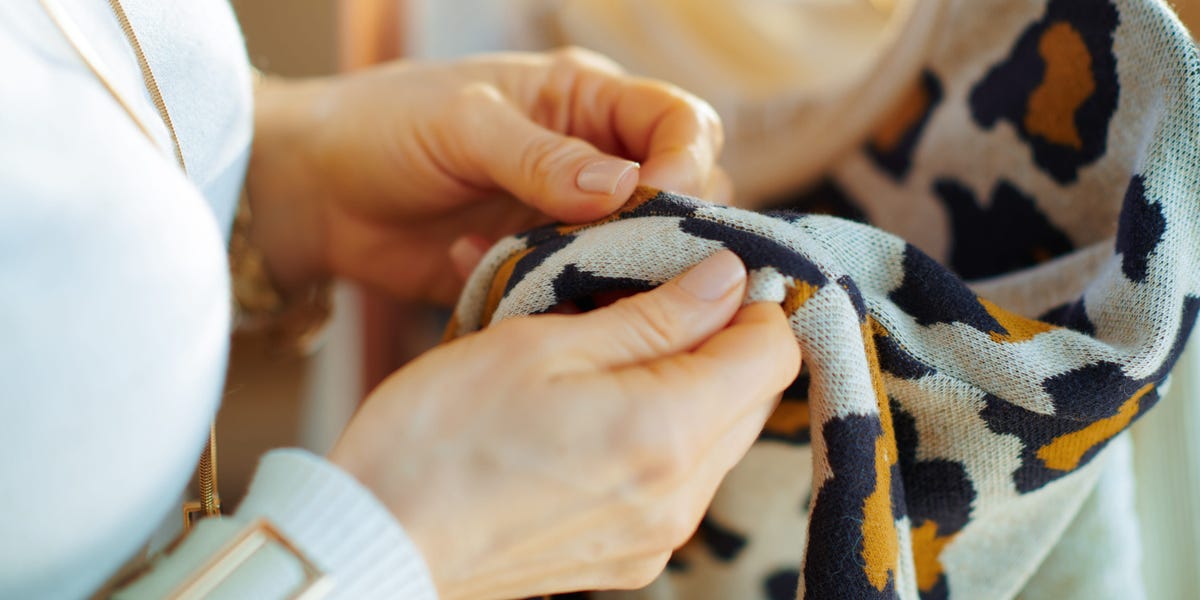The brand is using low-quality fabrics.
The sweater is made of 100% acrylic fibers.
Anakumka/Shutterstock
You’ve probably got a sweater in your closet that used to be the softest thing in the world but now is an itchy nightmare.
If that’s true, you also probably didn’t read the garment tag before you bought it.
“I think looking at the fabric details on a tag might seem tedious for people, but it’s actually a really important thing that you should do when you’re shopping,” said Welch. “I tell my clients it’s like a routine that you should have in your shopping experience.”
But what fabrics are good, and what fabrics are bad?
Short answer: It’s complicated.
“My rule of thumb is to look for natural fibers, but not all natural fibers are good quality either,” said Jennifer Wang, a Toronto-based clinical pharmacist and content creator who teaches her online followers how to shop for quality fashion and beauty products.
Natural fibers include materials like silk, cashmere, cotton, wool, and linen. But you should check if these natural materials have been blended with synthetic fibers because that can have an impact on the long-term quality, feel, and price of the garment.
One synthetic fiber to avoid — specifically in sweaters — is acrylic.
“Acrylic is designed to mimic cashmere,” said Wang. But once you wear and wash it a few times, “that acrylic is going to pill up or ball up on the surface, it’s not going to look quite as good, and it’s not going to feel quite as nice … so it’s really not for longevity and it’s more for making a sale in the store.”
One of the best things you can do to further your knowledge of textiles is research. Wang recommends the book “Textilepedia.”
“It’s a really great resource for beginners just to learn about the fabrics of clothes,” she said.


